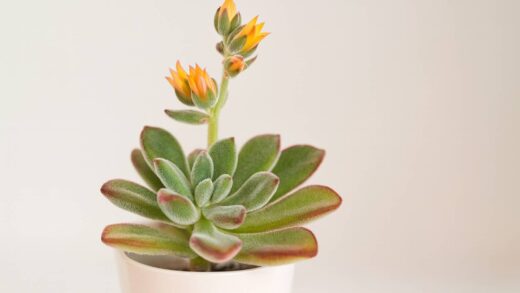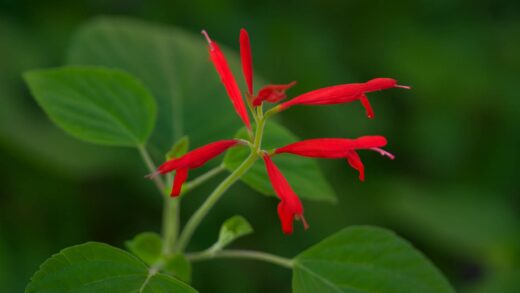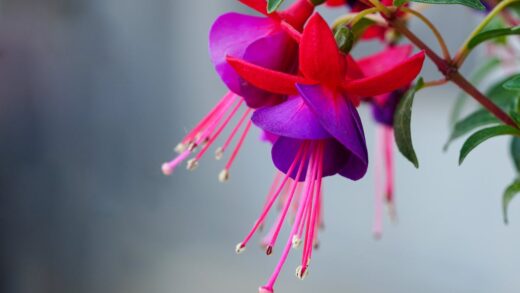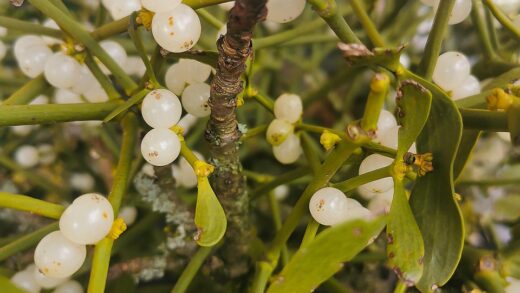Providing the correct amount of water is arguably one of the most critical aspects of cultivating a healthy and vibrant white calla lily. This plant has a distinct relationship with moisture, thriving in consistently damp soil during its active growth phase, yet being highly intolerant of stagnant, waterlogged conditions that can lead to fatal rhizome rot. Therefore, the art of irrigation lies in achieving a delicate balance: keeping the root zone sufficiently hydrated to support lush foliage and prolific blooming, while ensuring excellent drainage prevents the rhizome from decaying. Understanding the plant’s changing water needs throughout its annual life cycle, from vigorous spring growth to winter dormancy, is paramount for long-term success and is a skill that separates novice growers from experts.
During the active growing season, which typically spans from spring through summer, the white calla lily exhibits a significant demand for water. This is the period of rapid foliage development and flower production, processes that are heavily dependent on a consistent supply of moisture. The primary goal during this time is to keep the soil evenly moist, but never soggy. A reliable method for checking moisture levels is to insert a finger into the top 2-3 centimeters of the soil. If it feels dry to the touch, it is time to water the plant thoroughly.
When irrigating, it is best to apply water deeply and evenly, allowing it to soak the entire root ball until it begins to flow freely from the drainage holes of the container. This deep watering technique encourages the root system to grow downward, creating a more robust and resilient plant. It also helps to flush out any potential buildup of fertilizer salts in the soil. After watering, it is crucial to ensure that the pot is not left sitting in a saucer of excess water, as this would create the anaerobic, waterlogged conditions that are so detrimental to the rhizome’s health.
The frequency of watering will vary depending on a range of environmental factors, including temperature, humidity, light exposure, and the size of the plant and its pot. On hot, dry, or windy days, the plant will transpire more rapidly and may require watering more often, sometimes even daily. In contrast, during cooler, more overcast periods, the soil will retain moisture for longer. Therefore, it is essential to move away from a rigid, calendar-based watering schedule and instead adopt a more intuitive approach based on the actual moisture level of the soil.
The crucial role of drainage
While consistent moisture is vital, proper drainage is the non-negotiable counterpart in the watering equation for white calla lilies. The plant’s rhizomatous root system is extremely susceptible to fungal and bacterial rot when deprived of oxygen in saturated soil. Without adequate drainage, even a single instance of overwatering can be enough to initiate decay, which is often irreversible once it takes hold. This makes the selection of both the growing medium and the container fundamental components of a successful irrigation strategy.
More articles on this topic
The potting mix itself must be engineered for excellent drainage. A heavy, compacted soil, such as standard garden loam, will retain too much water when used in a container. An ideal medium for calla lilies should be light and porous, typically composed of a blend of organic matter like peat moss or coir for nutrient and moisture retention, combined with inorganic materials like perlite, vermiculite, or coarse sand. These amendments create small air pockets within the soil, allowing excess water to pass through quickly while retaining enough moisture for the roots to absorb.
The container chosen for the calla lily must facilitate the easy exit of excess water. This means that functional drainage holes at the bottom of the pot are an absolute necessity. It is surprising how often decorative pots without drainage are used, which is a certain death sentence for a calla lily. If using a decorative cachepot, it is best to keep the plant in a simple plastic nursery pot with plenty of holes and place this inside the more attractive outer container, remembering to empty the cachepot of any accumulated water after each irrigation.
In garden settings, the principle of drainage remains the same. If the native soil is heavy clay, it is essential to amend it to improve its structure and porosity. This can be achieved by incorporating significant amounts of organic compost, which helps to bind clay particles into larger aggregates, and materials like sand or fine gravel to create channels for water to drain away from the root zone. Planting calla lilies in raised beds is another excellent strategy for guaranteeing superior drainage, especially in areas with naturally heavy or water-retentive soils.
Watering during different life stages
The water requirements of a white calla lily are not static; they fluctuate significantly in response to the plant’s stage in its annual growth cycle. Recognizing and adapting to these changing needs is essential for proper care. During the initial phase after planting the rhizome in spring, water should be applied sparingly. The rhizome has no leaves to transpire moisture and is highly vulnerable to rot if the soil is kept too wet. A single, thorough watering after planting is often sufficient until the first green shoots emerge from the soil.
More articles on this topic
Once the plant enters its active growth phase and begins to produce a lush canopy of leaves, its water consumption increases dramatically. This is the time to begin a consistent watering routine, aiming to keep the soil evenly moist. The large leaves have a high rate of transpiration, and a lack of water during this period can lead to wilting, stressed growth, and a failure to develop flower buds. The peak water demand occurs just before and during the blooming period, as the plant requires significant resources to produce and sustain its large, elegant spathes.
As the blooming period comes to an end in late summer or early autumn, the plant begins its natural transition into dormancy, and its water needs start to decline. This is a critical point where growers must begin to reduce the frequency of watering. Continuing to water heavily as the foliage yellows and dies back is a common and fatal mistake. Gradually tapering off the water supply signals to the plant that its resting period is beginning and encourages the transfer of energy back to the rhizome, preventing it from rotting in cool, damp soil.
During the full dormancy period, when the foliage has completely died back, the calla lily requires very little to no water. If the rhizome is being stored in its pot, the soil should be allowed to dry out almost completely. Providing only a very minimal amount of water, perhaps once a month, is enough to prevent the rhizome from completely desiccating. This dry rest is an essential part of the life cycle that allows the plant to rejuvenate. The regular watering schedule should only be resumed in the spring when new signs of growth appear.
Recognizing signs of water stress
The foliage of a white calla lily serves as an excellent indicator of its hydration status, and learning to read these visual cues is a key skill for any grower. An underwatered calla lily will often exhibit wilting or drooping leaves, especially during the warmer parts of the day. The edges of the leaves may also turn brown and crispy. If the soil is dry and the plant is wilting, this is a clear sign that it needs a thorough watering immediately. In most cases, the plant will recover quickly once it is rehydrated, although prolonged or repeated wilting can cause permanent damage.
Ironically, the signs of overwatering can sometimes mimic those of underwatering, which can be confusing. An overwatered plant may also have yellowing and wilting leaves. The key difference is the condition of the soil; if the leaves are yellow and limp and the soil is consistently wet or soggy, overwatering is almost certainly the culprit. This condition is far more dangerous, as it indicates that the roots are suffocating and likely beginning to rot. Other signs of overwatering include a foul, musty smell from the soil and a general lack of vigor in the plant.
Examining the root system and the rhizome directly is the definitive way to diagnose problems related to watering. To do this, you can gently slide the plant out of its pot. Healthy roots should be firm, plump, and typically white or light-colored. If the roots are brown, black, soft, or mushy, and easily break apart, root rot has set in. Similarly, a healthy rhizome is firm and solid. A soft, discolored, or foul-smelling rhizome is a clear indication of rot caused by excessive moisture and poor drainage.
To prevent water-related stress, the best approach is proactive and observational. Rather than adhering to a strict schedule, make a habit of checking the soil moisture every few days. Get a feel for the weight of the pot when it is dry versus when it is freshly watered. Pay close attention to the plant’s appearance and how it responds to its environment. By combining these observational skills with the foundational principles of good drainage and cyclical watering, you can consistently provide the perfect level of moisture for your white calla lily.
Water quality and its impact
While the quantity and frequency of watering are paramount, the quality of the water used can also have a subtle yet significant impact on the long-term health of a white calla lily, particularly for container-grown plants. Tap water in many municipalities is treated with chemicals like chlorine and fluoride, and it can also have a high concentration of dissolved mineral salts. Over time, these substances can accumulate in the potting soil, potentially reaching levels that can be harmful to the plant’s sensitive root system.
Hard water, which is rich in calcium and magnesium carbonates, can gradually increase the pH of the potting soil, making it more alkaline. White calla lilies prefer a slightly acidic to neutral soil pH, typically in the range of 6.0 to 6.5. A shift towards alkalinity can “lock up” certain essential nutrients, particularly micronutrients like iron, making them unavailable for the plant to absorb even if they are present in the soil. This can lead to nutrient deficiencies, often manifesting as yellowing leaves with green veins, a condition known as chlorosis.
To mitigate the potential negative effects of tap water, there are several simple strategies that can be employed. One of the easiest methods is to let tap water sit in an open container for at least 24 hours before using it. This allows much of the chlorine to dissipate into the atmosphere. While this does not remove fluoride or mineral salts, it does eliminate one of the potentially harsh chemicals. For growers with particularly hard water, using filtered, distilled, or rainwater is an ideal alternative that avoids the issue of mineral buildup altogether.
Periodically flushing the soil of container-grown plants can also be very beneficial. This involves watering the plant heavily with a large volume of clean water, such as rainwater or distilled water, allowing it to drain completely through the pot. This process helps to leach out the accumulated salts and minerals from the potting medium, essentially resetting the soil environment. Performing a thorough flush once or twice during the growing season can help prevent the slow buildup of harmful substances and maintain a healthier root zone for your white calla lily.


















